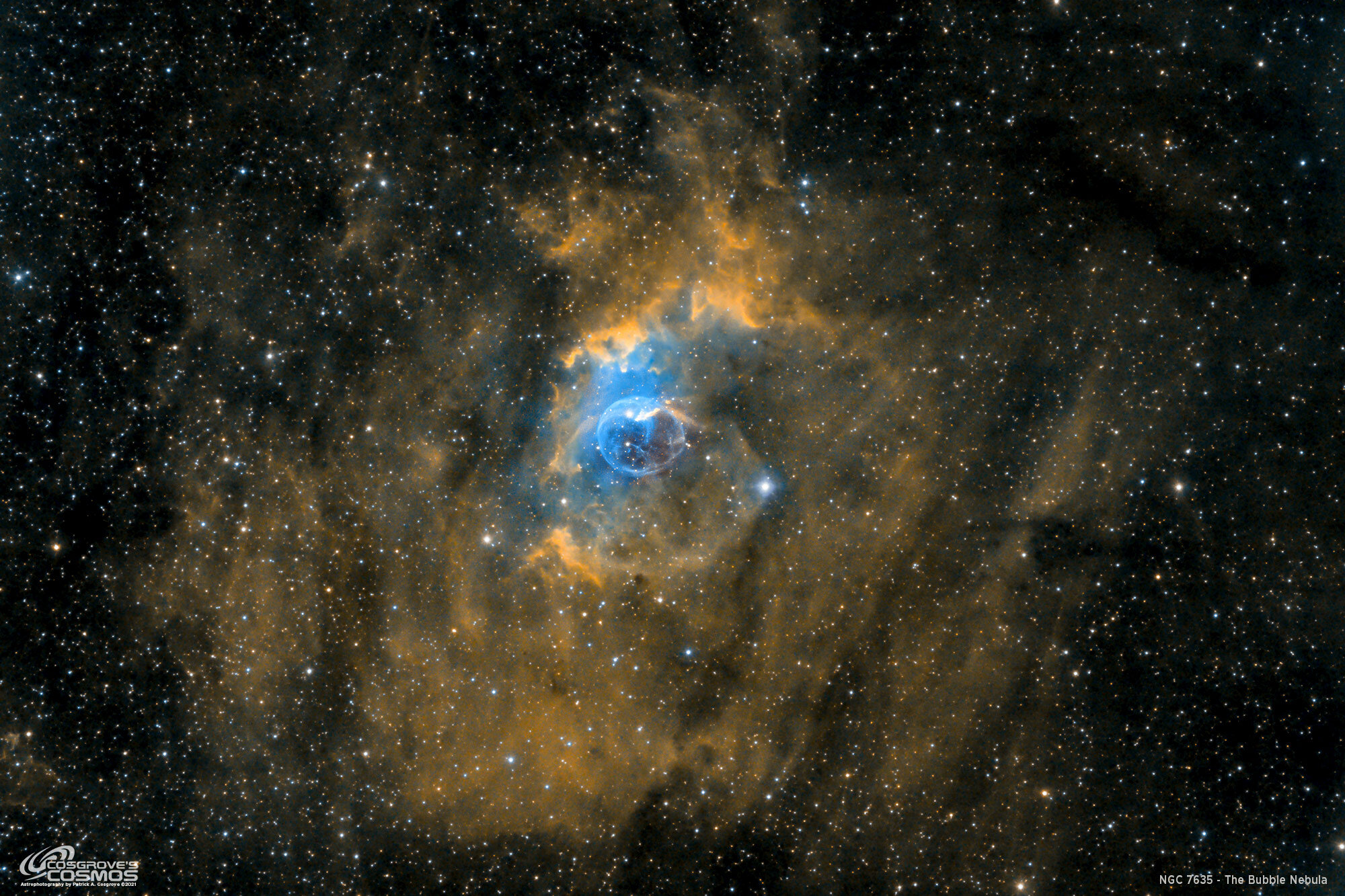NGC 7635 - The Bubble Nebula in SHO
Date: September 25th, 2020
Cosgrove’s Cosmos Catalog ➤#0055
Awarded Flickr “Explore” Status Sep 26, 2020
Table of Contents Show (Click on lines to navigate)
About the Target
NGC7635 - The Bubble Nebula - A narrowband image in the Hubble Palette. Also known as Sharpless 162 and Caldwell 11. The Bubble Nebula can be found in the constellation Cassiopeia, not far from the Open Cluster Messier 52. This area is a rich HII region and the bubble itself was created by stellar winds from a massive hot blue Wolf-Rayet star, AO 20575, that shed its material about 300,000 years ago to form the bubble. This star is 44 times larger than our sun. The Bubble itself is found in a massive molecular cloud that contains the expansion of the bubble and is excited by the same star, causing it to glow as well.
The Annotated Image
The annotated image was created using the ImageSolver and AnnotateImage scripts in Pixinsight.
About the Project
This image is the result of 25x5min exposures through Ha, O3, and S2 narrowband filters - for total integration of about 6.25 hours. This was taken over two nights in the past week when a cold Canadian air mass pushed the smoke plume from the fires out west down south of us. I would like to get more integration but I only have access to it for a few hours as it rises above my tree line and before it sets behind another set of trees.
The Location in the Sky
FreeStarCharts.com Constellation map showing the location of the Bubble Nebula indicated by a yellow arrow.
Capture Details
Light Frames
25 x 500 seconds, bin 1x1 @ -15C, unity gain, ZWO Gen II Ha Filter
25 x 500 seconds, bin 1x1 @ -15C, unity gain, ZWO Gen II O3 Filter
25 x 500 seconds, bin 1x1 @ -15C, unity gain, ZWO Gen II S2 Filter
Total of 6.25 hours
Cal Frames
50 Bias exposures
25x500 seconds Dark exposures
50 Ha Flats
50 O3 Flats
50 S2 Flats
Capture Hardware
Scope: Astrophysics 130mm Starfire F/8.35 APO refractor
Guide Scope: Televue 76mm Doublet
Camera: ZWO ASI1600mm-pro with ZWO Filter wheel with ZWO filter set
Guide Camera: ZWO ASI290Mini
Focus Motor: Pegasus Astro Focus Cube 2
Camera Rotator: Pegasus Astro Falcon
Mount: Ioptron CEM60
Polar Alignment: Polemaster camera
Software
Capture Software: PHD2 Guider, Sequence Generator Pro controller
Image Processing: Pixinsight, Photoshop - assisted by Coffee, extensive processing indecision and second-guessing, editor regret and much swearing…..
Hello, Back To Top World!



Standardizing the base
Finally, the Tri-Pier and the its extension column arrived. This allowed me to standardize the base of the two telescope platforms. There are several reasons that made this useful. First - everything is the same when you are handling things in the dark. And secondly, I was in the process of revolutionizing how I setup at night…..